 1987 Peugeot 405 I (15B) Dimensions, Size & Specs
1987 Peugeot 405 I (15B) Dimensions, Size & SpecsMeasurements of the 1987 Peugeot 405 I, engineered for optimal performance and comfort
| Dimensions | |
|---|---|
| Length: | 4408 mm173.5 in14.5 ft |
| Width: | 1714 mm67.5 in5.6 ft |
| Height: | 1406 mm55.4 in4.6 ft |
| Trunk Capacity: | 470 liter16.6 cu ft |
| Weight Specifications | |
| Curb Weight: | 1026-1243 kg2262-2740 lbs |
| Maximal permitted Weight: | 1550-1690 kg3417-3726 lbs |
| Tire Specifications | |
| Rims Sizes: |
|
| Tire Sizes: |
|
The Peugeot 405 I (15B), produced between 1987 and 1994, is a classic mid-size sedan that cemented Peugeot's reputation for combining style, comfort, and practicality. Measuring 4408 mm (173.5 inches) in length, 1714 mm (67.4 inches) in width, and 1406 mm (55.3 inches) in height, it offers a well-proportioned exterior ideal for urban and suburban driving. With a curb weight ranging from 1026 to 1243 kilograms (2262 to 2740 pounds), the Peugeot 405 provides a balanced driving experience, contributing to its agility and fuel efficiency. The maximum permissible weight ranges between 1550 and 1690 kilograms (3417 to 3726 pounds), reflecting its solid build capable of accommodating passengers and cargo comfortably. Inside, the luggage compartment boasts a generous capacity of 470 liters (16.6 cubic feet), making it practical for daily needs and longer journeys. The vehicle rides on 14- or 15-inch rims, fitted with tire sizes including 175/70 R14, 185/65 R14, and 195/55 R15, offering options to meet various driving preferences and conditions. Overall, the Peugeot 405 I combines its compact yet spacious dimensions with reliable performance, making it a noteworthy contender among sedans of its era and a popular choice among drivers seeking classic French engineering.
Discover the standout features that make the 1987 Peugeot 405 I a leader in its class
Have a question? Please check our knowledgebase first.
The Peugeot 405 I (15B) sedan measures 4408 mm (173.5 inches) in length, 1714 mm (67.4 inches) in width, and 1406 mm (55.3 inches) in height. These dimensions place it comfortably within the mid-size sedan category, offering a balance between interior space and maneuverability. Its moderate width supports good road presence while still being suitable for urban driving and parking.
The curb weight of the Peugeot 405 I varies between 1026 kg to 1243 kg (approximately 2263 to 2740 pounds), depending on the specific configuration and optional equipment. The maximum allowable weight ranges from 1550 kg to 1690 kg (about 3417 to 3726 pounds). This weight range allows for decent fuel efficiency while providing adequate structural integrity and safety.
The Peugeot 405 I offers a luggage capacity of 470 liters (about 16.6 cubic feet), which is competitive for a mid-size sedan from the late 1980s and early 1990s. This trunk volume provides ample space for groceries, luggage, or other cargo, making it practical for daily use and family trips. Compared to similar cars of its production era, the luggage space is considered generous and user-friendly.
The Peugeot 405 I came with tire sizes including 175/70 R14, 185/65 R14, and 195/55 R15, mounted on rims sized either 14 or 15 inches. This variety in tire and rim sizes allowed owners a balance between comfort, handling, and performance depending on their preferences or the specific model variant. The 15-inch rims typically provided a sportier feel with lowered sidewall tires.
Yes, the Peugeot 405 I with its length of 4408 mm (173.5 inches) and width of 1714 mm (67.4 inches) fits comfortably into most standard single-car garages. Typical single garages measure about 2400 to 2700 mm (7.9 to 8.9 feet) in width and about 4800 to 5500 mm (15.7 to 18 feet) in length, providing ample clearance around the car for opening doors and maneuvering. Its moderate profile also aids in parking ease inside conventional garages.
The Peugeot 405 I replaced the Peugeot 305 and to some extent the 309 models. Compared to the Peugeot 305, the 405 grew notably in size with a length of 4408 mm versus the 305's approximate length of 4270 mm. This increase in size offered more interior space and enhanced road presence. Additionally, the 405's curb weight of around 1026-1243 kg was generally higher than the 305, reflecting increased size and added safety or comfort features. These changes marked an evolution towards a larger, more refined family sedan.
The Peugeot 405 I competes with mid-size sedans such as the Volkswagen Passat B3, Ford Sierra, and Opel Vectra of the same era. Dimensionally, the 405's 4408 mm length and 1714 mm width position it similarly among these competitors, with a slightly more compact footprint than some but offering competitive interior space. Its luggage capacity of 470 liters is also in line or slightly better than many rivals. The 405 was praised for its sharp handling and comfortable ride, attributes that helped it stand out in the highly competitive segment. Additionally, its styling by Pininfarina and practical dimensions made it a popular choice for European buyers.
With a height of 1406 mm (55.3 inches), the Peugeot 405 I offers a relatively low profile for a sedan from its era, aiding aerodynamics and sporty styling. The moderate height supports a lower center of gravity, improving handling and driving dynamics. Ground clearance is typical for sedans and sufficient for normal road conditions but may be less suitable for rough terrain. The height contributes to comfortable headroom inside while maintaining an agile feel on various road surfaces.
The Peugeot 405 I sedan offers a spacious interior designed to comfortably accommodate five passengers. Its relatively wide body (1714 mm / 67.4 inches) and long wheelbase contribute to generous legroom and shoulder room within both front and rear cabins. The design emphasizes ergonomic seating and convenient controls, which were sophisticated for the time. This interior spaciousness and comfort made the 405 well-suited for families and long-distance travel.
The standard rim sizes for the Peugeot 405 I ranged between 14 and 15 inches, paired with tire sizes like 175/70 R14, 185/65 R14, and 195/55 R15. Larger rims (15-inch) with lower profile tires typically enhance handling responsiveness and cornering stability, while the smaller 14-inch rims with taller sidewalls favor a smoother and more comfortable ride. This flexibility allowed drivers to prioritize either sporty performance or comfort based on their preferences or driving conditions.
Discover similar sized cars.

| Production: | 1990-1997 |
|---|---|
| Model Year: | 1990 |
| Length: | 4400-4430 mm173.2-174.4 in |
| Width: | 1700-1715 mm66.9-67.5 in |
| Height: | 1390-1410 mm54.7-55.5 in |
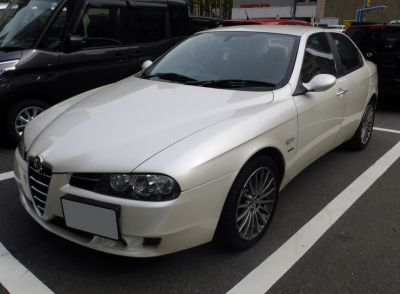
| Production: | 2003-2006 |
|---|---|
| Model Year: | 2003 |
| Length: | 4435 mm174.6 in |
| Width: | 1745 mm68.7 in |
| Height: | 1430 mm56.3 in |
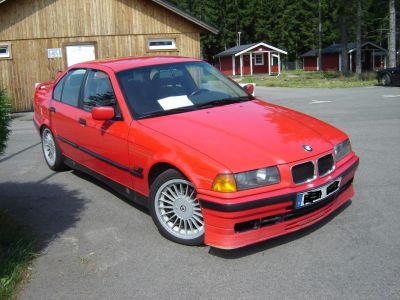
| Production: | 1992-1993 |
|---|---|
| Model Year: | 1992 |
| Length: | 4325 mm170.3 in |
| Width: | 1645 mm64.8 in |
| Height: | 1370 mm53.9 in |

| Production: | 1998-2005 |
|---|---|
| Model Year: | 1998 |
| Length: | 4400 mm173.2 in |
| Width: | 1720 mm67.7 in |
| Height: | 1410 mm55.5 in |
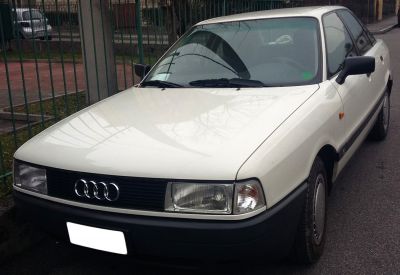
| Production: | 1986-1991 |
|---|---|
| Model Year: | 1986 |
| Length: | 4393 mm173.0 in |
| Width: | 1695 mm66.7 in |
| Height: | 1397 mm55.0 in |
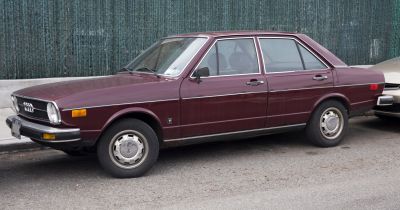
| Production: | 1973-1979 |
|---|---|
| Model Year: | 1973 |
| Length: | 4369 mm172.0 in |
| Width: | 1643 mm64.7 in |
| Height: | 1361 mm53.6 in |
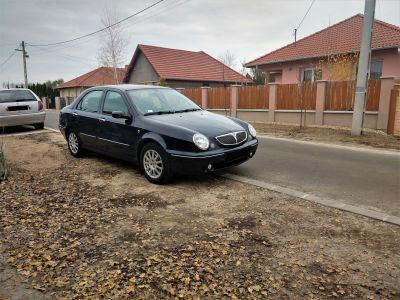
| Production: | 1999-2005 |
|---|---|
| Model Year: | 1999 |
| Length: | 4466 mm175.8 in |
| Width: | 1743 mm68.6 in |
| Height: | 1462 mm57.6 in |
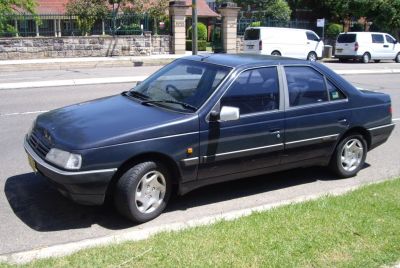
| Production: | 1992-1996 |
|---|---|
| Model Year: | 1992 |
| Length: | 4408 mm173.5 in |
| Width: | 1694-1714 mm66.7-67.5 in |
| Height: | 1390-1406 mm54.7-55.4 in |
